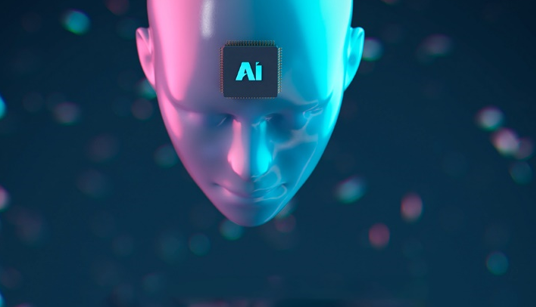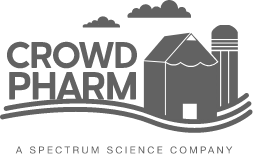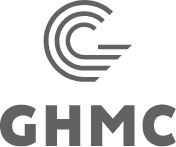AI, or artificial intelligence, is nothing new to the marketing, communications, and healthcare space. For years, companies have dabbled with AI tools to create things like chatbots to interact with consumers, or to help make sense of large amounts of data. While these tools have undoubtedly been useful, up to this point they have felt… a bit clunky, often brushing with broad strokes rather than personalized information.
AI, in theory, is meant to make experiences better and easier for the user. However, the outputs of these machines haven’t quite been up to snuff. Sometimes the result of the AI is questionable, requiring the intervention of human interpretation that the process was meant to alleviate.
Enter: Open AI’s beta release of ChatGPT.
ChatGPT is a model that is meant to create interactions in a more conversational way. The bot allows users to ask questions, provide follow-ups, and even allow room for admitting its mistakes. This amplifies what Google does for us by synthesizing the information multiple search results could give us into a single answer. It also remembers the conversation, something digital assistants like Siri and Alexa are incapable of. Quite simply, it is much more advanced than anything we have seen to this point.
Currently, ChatGPT is available for free to users who are curious, so naturally, we signed up. Here are some of our learnings, and how we think it has the potential to shape the marketing, communications, and healthcare space.
1. It can provide information and where the information is sourced from, creating an easy path to check for accuracy

2. It can write for specific audiences when asked, even if it takes a couple tries to get it right
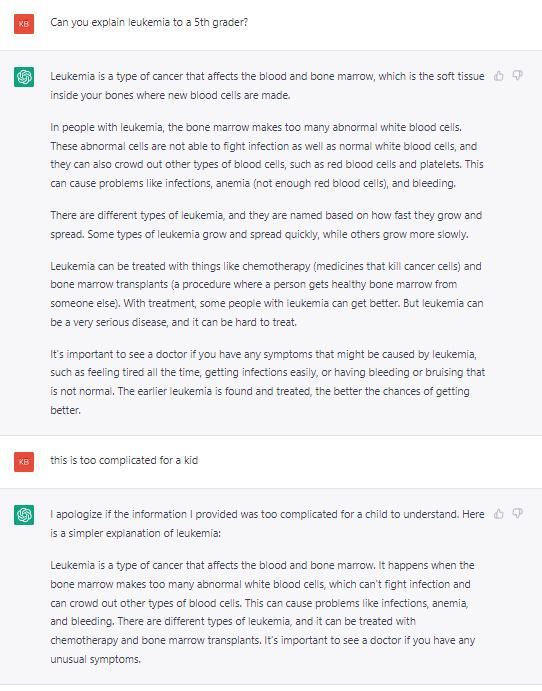
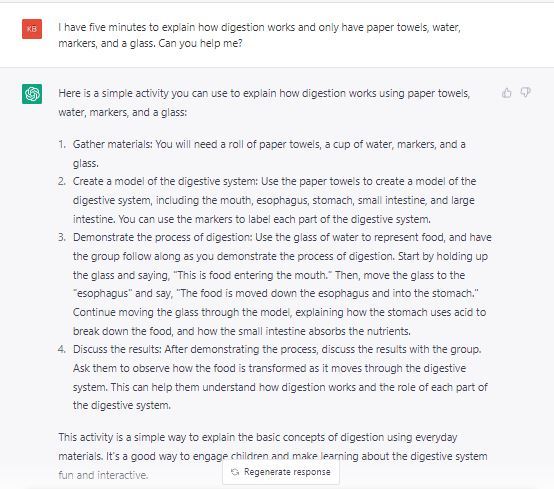
4. It currently doesn’t give imagery. Chat GPT is text-only at this point and can’t be used to generate photos, infographics, or other illustrations.

5. MOST IMPORTANT: It isn’t always accurate. This means the tool isn’t a replacement for human creation and talent, and information coming from it should always be fact-checked.
So, how can we use AI technology now?
AI moves up the starting line for Creatives:
AI applications, like ChatGPT, can provide a first draft of copy. Creatives will no longer have the burden of an intimidating blank page. They’ll be able to focus on nuances the AI won’t yet understand like tone of voice and emotional appeal. AI technology will allow our Creative teams to focus on the overarching campaign, how messages work together, or generally, the bigger picture.
AI can drive new experiences for consumers:
ChatGPT is a great example of how AI can benefit chatbots: it’s conversational, personalized, and an explicit answer to the user’s query. When considering a branded experience, however, we must remember the importance of brand consistency, retaining a branded experience (we don’t want to inadvertently drive to our competitors), and, especially in the healthcare space, regulatory approvals. This means that instead of having the whole wide web as an input in the AI software, we start with approved messages and rules for answers (for example, if the data from a clinical trial is provided, it’s paired with the study design).
While ChatGPT is not currently commercialized, this technology could be beneficial to the user experience through micro-moments. Consumers want information quickly. This AI chatbot technology (or digital concierge) can provide a quick, relevant answer to deliver just that. Consider an AI chatbot result that can synthesize content from multiple pages on your website and literally create a personalized landing page for each visitor. And because it’s able to learn over time, it can better encourage relationships for your brand and repeat visitors. This personalization increases exponentially when applied across an entire marketing ecosystem, more easily marrying the ideas of integrated and omnichannel marketing.
ChatGPT is just the beginning.
AI enables content efficiencies on an enterprise-level:
Internal communications can also benefit, whether it’s more seamless communication between the marketing and sales teams or the consistency of information across global affiliates or even an enterprise-wide content creation hub. Existing tools like Salesforce, Veeva, and Aprimo already allow for efficiencies of asset use. They offer a directory of approved content that salespeople and affiliates can search from. But, what if instead of a searchable directory, it was more like a digital content pantry? The ingredients would be topic-based, regulatory approved copy and the pots and pans would be templates created for application across the ecosystem. Internal teams could rummage in the pantry to whip up virtually any content asset, from a quick late-night snack (ad hoc email) to a full dinner with sides and a dessert (omnichannel campaign in multiple languages). This would create magnitudes of efficiencies in allowing exponential freedom in needed marketing materials while cutting the cost of content creation for each asset created. And because an AI engine would be informed through approved and consistent messaging, branding wouldn’t suffer.
ChatGPT is a distinctive marker in a time of exponential technology.
ChatGPT certainly isn’t a replacement for human intervention. It offers a range of possibilities for marketing and communication professionals, but it’s important to remember that there are limitations. Right now, AI acts as a synthesizer of content and while it can develop new materials, it’s based on an existing framework. Ideation, brainstorming, and innovation are still innately human and it’s still going to be important to employ strategic, creative, and diverse teams to prevent pitfalls and reduce implicit biases. Technology is evolving faster than ever and emerging trends such as ChatGPT will continue to be catalysts for innovative thinking and strategic execution throughout the industry.
Kellyn Baysinger is Director of Content Strategy and Tessa Lieber is Associate Director of Content Strategy at Spectrum.
Perspectives
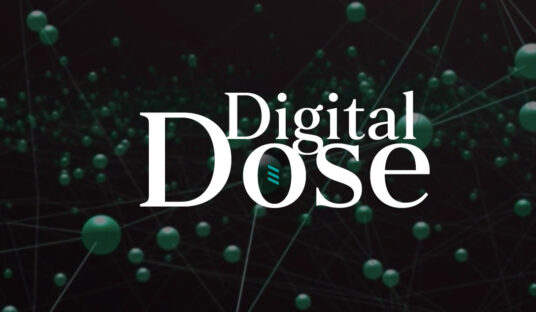
Media
Digital Dose: Disablement of Third-Party Cookie Tracking and X’s 2024 Development Plan

Media
Digital Dose: ByteDance New AI Model and Navigating a Cookieless World

Media
Digital Dose: LinkedIn’s New Media Planning API and a New Trending Topics Feature on Threads

Media
Digital Dose: Google and Reddit’s Latest Partnership and Tips for Engaging Gen Z on LinkedIn
